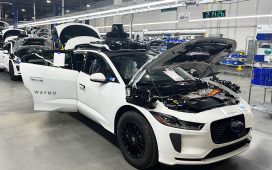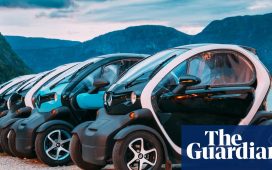A group of San Francisco organizers are encouraging people to put traffic cones on the hoods of driverless vehicles as a form of protest against the cars’ expansion on city streets.
A video of the group’s actions with step-by-step instructions on how to disable a robo-taxi with a cone has gone viral on Twitter and sparked intense debates about the pros and cons of autonomous vehicles and the value of protesting in this way.
Safe Street Rebel, a group of organizers that advocate for pedestrian safety and reducing the number of cars on roads, is behind this stunt. It hopes it will raise the public’s awareness of the potential dangers driverless taxis pose before a pivotal vote by the California public utilities commission set to take place on 13 July.
The vote would allow Cruise, a company controlled by the automaker General Motors, and Waymo, a Google spinoff, to charge people for rides as a part of the state’s driverless autonomous vehicles passenger service deployment program, according to the meeting agenda.
Videos of driverless cars with cones on their hoods have garnered thousand of likes on Twitter and led Safe Street Rebel to dub the days leading up to the meeting as “week of cone”.
“It’s a great time,” one of the organizers said of putting cones on the hoods of robo-taxis. “We’re not damaging anyone’s property, it’s very fixable, but it is a funny and effective tactic that has really resonated.”
Waymo however does not see the same frivolity the organizer describes. It says the cone scheme reflects a lack of understanding of how autonomous vehicles work and is “vandalism and encourages unsafe and disrespectful behavior on our roadways”, a spokesperson told the Guardian. It says it will call police on anyone caught interfering with their fleet.
The organizer, who asked to remain anonymous due to potential legal or punitive actions, said that this is just the latest of several actions Safe Streets Rebel has done in pursuit of getting cars off city streets, getting more money into public transportation and keeping pedestrians and bikers safe. Usually it focuses on human drivers, but it argues that driverless cars pose many risks to safety and the environment but are being sold as a strong alternative to vehicles driven by people.
“They still require wide roads, tire wear, they have cameras everywhere,” the organizer said of robo-taxis. “It’s not just about ‘are they safer than a human driver?’ We want healthy cities that don’t require these high tech surveillance pods moving around.”
Safe Streets Rebel is not alone in its skepticism of driverless taxis. In late July, the San Francisco fire chief, Jeanine Nicholson, urged the state to move slowly on allowing fleets of driverless cars to roam city streets 24×7. Driverless cars have been accused of blocking emergency vehicles and buses.
Incidents that have attracted headlines included a Cruise robo-taxi that appeared to idle in the midst of a mass shooting for several minutes in early June. In January a firefighter was reportedly forced to break the window of a Cruise vehicle to stop it after the car nearly drove over hoses that were being used to put out a raging house fire.
In addition, the California department of motor vehicles has logged nearly 70 autonomous vehicle collision reports this year, including a 21 May incident in San Francisco in which a dog was struck and killed by a Waymo vehicle operating in autonomous mode but with an employee in the front seat, according to the DMV report.
In a statement to the Guardian, Cruise says that its cars are currently used to give free rides to people who work late into the night and do not have a reliable means of transportation. It adds that the cone protest has not had a meaningful impact on its fleet’s operation but it can block their rideshare and food delivery effort by adding to traffic and congestion.










